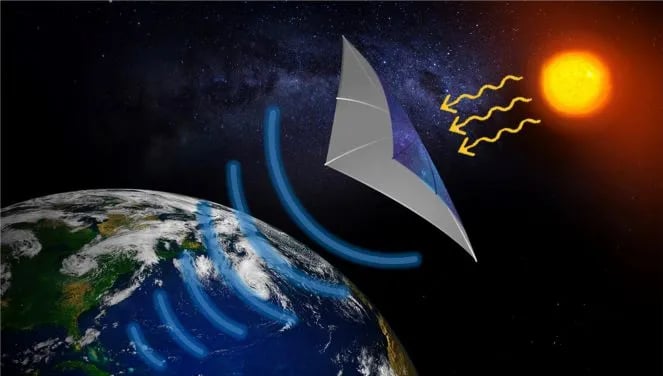Japan's Ohisama Project: A Leap Towards Wireless Solar Energy Transmission


Introduction to the Ohisama Project
In 2025, Japan is set to make remarkable advancements in the field of energy transmission with the launch of its Ohisama Project satellite. This innovative endeavor aims to harness solar energy from the vast expanse of space, ultimately providing a sustainable power solution for Earth. The project will feature a small satellite weighing approximately 180 kilograms, designed to transmit around 1 kilowatt of power from an altitude of 400 kilometers above the planet's surface.
The Technology Behind Solar Energy Transmission
The Ohisama Project emphasizes the use of photovoltaic panels, which will be integrated into the spacecraft. These panels will capture solar energy, converting it into electricity, which will then be wirelessly transmitted to Earth. The technology aims to beam this energy down over a distance of 3 to 4 miles, showcasing the potential of utilizing space-based solar power as a viable energy source. By adopting such an approach, Japan seeks to mitigate the limitations associated with terrestrial energy generation and leverage the almost limitless resources offered by the sun in space.
Implications for the Future of Energy
The implications of Japan's Ohisama Project extend beyond mere technological advancements. If successful, this initiative could revolutionize the energy landscape, providing clean energy solutions that are not only sustainable but also reliable. The ability to transmit solar energy wirelessly from space to Earth has the potential to significantly reduce reliance on fossil fuels and other traditional energy sources, contributing to global efforts in combating climate change.
Moreover, the Ohisama Project offers a glimpse into the future of energy production. By capitalizing on the concept of space-based solar power, other nations may follow Japan’s lead, possibly yielding a new era in energy innovation. As governments and private sectors worldwide focus on developing renewable energy solutions, the technological blueprint established by the Ohisama Project could inspire similar projects globally.
In conclusion, Japan's Ohisama Project stands as a beacon of hope for energy sustainability in the years to come. Through this pioneering satellite initiative, Japan not only seeks to make history in 2025 but also aims to pave the way for a cleaner, greener future based on space-based solar energy. As we approach this significant milestone, the world watches with anticipation, eager to witness the potential transformation in energy consumption and generation powered by the sun's rays captured far beyond our atmosphere.
